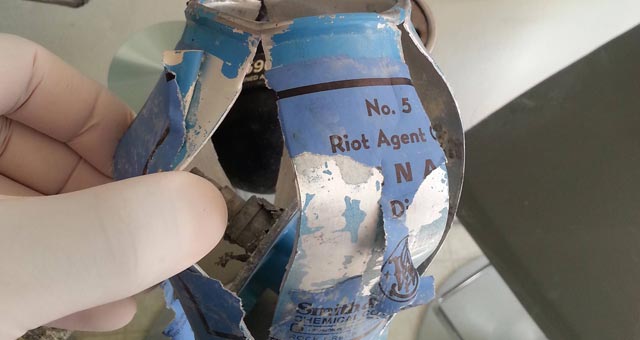
Analysis of less-lethal weapons deployed against residents of Ferguson, Missouri reveals that police are using decades-old tear gas and riot control agents that may pose health risks to the community.
The city of Ferguson, Missouri has erupted in response to the August 9 shooting death of unarmed black teenager Michael Brown by a local police officer. Michael Brown’s friends and community members immediately hit the streets in protest, calling for accountability and justice for his killing and the Ferguson Police Department’s abuse and mistreatment of black residents. The growing number of protesters – who are demonstrating against both this particular act of violence as well as anti-black police violence across the country – have been met with escalating force, perhaps more than in any other recent domestic confrontation. Brown’s friends and family are left looking for answers amid a haze of tear gas and rubber-coated bullets.
As reported last week in Yes! Magazine, our ongoing analysis of the less-lethal weapons used in Ferguson shows the large majority of spent munitions found in the city have been produced by two US based less-lethal contractors: Combined Tactical Systems, a Combined Systems, Inc. product line used by the St. Louis County Police Department, and Defense Technology, a division of The Safariland Group, used by the local Ferguson Police Department and Missouri State Highway Patrol. In addition to munitions manufactured by these two companies, we have uncovered evidence of the use of two tear gas canisters so old that they cannot be positively dated.
St. Louis-area resident Andrew, who asked to be identified by his first name only, posted photos on his Instagram from the protest on Wednesday, August 13. The self-identified “firearm enthusiast” says he “wanted to document a part of history,” and wished to observe police weapons from the front lines. “I got some pretty strange looks,” he acknowledged. He bagged all the spent munitions he and a friend could find, and posted photos later.
One of Andrew’s photos from Wednesday night displays an arrangement of spent munitions, including types that protesters had not yet posted. Among them: two clearly outdated riot grenades manufactured by Smith & Wesson Chemical Company, a division of Smith & Wesson that was eliminated in the late 1980s, according to the company’s history.
Since Brown was killed, police from both Ferguson and St. Louis County have fired on protesters with rubber-coated bullets, pepper balls, beanbag rounds, tear gas, and other less-lethal ammunition on an almost nightly basis. The expelled debris made its way across social media, and eventually to national broadcasts. But before the national media descended on Ferguson, the community was subjected to gas on their own properties; on the night of August 11, police fired tear gas on residential streets. Residents photographed canisters, still smoking, in their and their neighbors’ front yards.
Andrew provided us with additional exclusive photographs that show the impact damage to these vintage canisters. While most canisters detonate and mostly remain in one piece, these were not intact, sustained a lot of damage, and could have sent shrapnel flying. Andrew witnessed, “police throwing tear gas canisters by hand,” rather than shooting them from a modern munitions gun or rocket launcher. He believes that these could have been the Smith & Wesson canisters. The area on the canisters where the handles attach appears to be rusted, an obvious safety and containment hazard. Andrew notes that the vintage canisters are made of “some pretty solid metal.”He later found what he thinks may have been a handle from the Smith & Wesson grenades, and notes that its metal is lighter than the metal of the canisters, perhaps tin.
What’s left of the labels identifies the products as Smith & Wesson Chemical Co. Riot Control Grenades, although it is unclear whether the gas inside is CS or the older CN. Although CN (2-Chloroacetophenone) is still manufactured and is the active ingredient in Mace, CS gas (0-Chlorobenzalmalononitrile) is “more stable, more potent and less toxic” and is commonly used in riot control agents. Smith & Wesson once manufactured CN gas, which has been phased out for United States use in favor of safer CS gas. Smith & Wesson packaged their CN gas in canisters similar to the ones found in Ferguson and Egypt. Yemeni security forces deployed CN gas against protesters there during the spring of 2011, causing extreme reactions including convulsions and muscle spasms. The physical effects among protesters were so severe that they initially believed they were being hit with nerve gas.
The markings on the vintage canisters found in Ferguson fail to identify them further; there are no expiration or manufacture dates printed on either. While at the protest on August 13, journalist Anastasia Churkina posted on Twitter what appears to be an earlier photograph of one of the two vintage canisters Andrew retrieved.
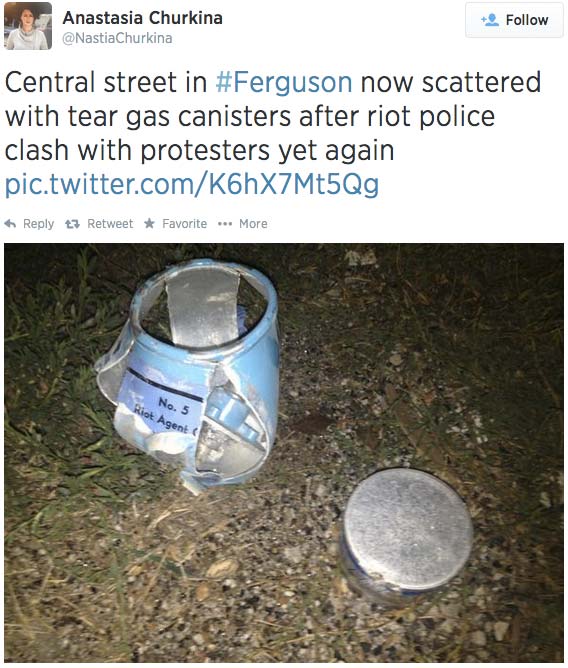 Tweet from Anastasia Churkina
Tweet from Anastasia Churkina
Similar products and models are listed occasionally on auction sites for collectors of antique and vintage firearms and ammunition. A Cold War-era Smith & Wesson grenade identification training poster owned by the Canadian Museum of History displays a model similar to one of the two older cans, listed as a “No. 5 Blast Dispersion Grenade.” A grenade container on an ammunition enthusiasts’ message board similar to the canister in the poster shows a manufacturing date of 1982, along with CS as the type of gas contained. (The label on one of the canisters found in Ferguson appears to read “Instantaneous Discharge,” rather than “Blast Dispersion.”) Similar vintage Smith & Wesson canisters were identified in Egypt at the height of the protests that eventually toppled Hosni Mubarak’s regime in 2011, one with an expiration date of either 1980 or 1990. Modern chemical munitions, including those manufactured by Defense Technology and Combined Tactical, have a five-year warranty and expire five years after their date of manufacture.
Social media reporting during the Arab Spring brought new evidence of expired tear gas sales, drawing criticism from human rights organizations. Amnesty International, in particular, criticized the United States for selling military leftovers to oppressive governments such as Egypt’s and Bahrain’s. Tear gas has not been used this wantonly in an American city in modern times; even its deployment against WTO protesters in 1999 and Occupy Oakland in 2011 was isolated and largely away from residential areas. Chemical munitions deployed in residential areas can be deadly: Physicians for Human Rights, an independent organization, recorded 34 tear gas related deaths in Bahrain from 2011 to 2012, many from inhalation in close or confined spaces.
The chemical weapons convention prohibits the use of chemical munitions in war; the weapons sales angered activists and rights groups who saw it is as evidence of American companies profiting from attacks on protesters. An exception to the chemical weapons convention, to which the United States is a signatory, is the use of chemical munitions for domestic law enforcement purposes; it is under this allowance that tear gas and other chemicals are now deployed in Ferguson.
The legality of the use of expired and/or vintage munitions must still be explored, but deploying such a weapon against a civilian population, especially in residential areas, demonstrates a significant disregard for health impacts. Outdated and expired tear gas canisters are ignitable waste as defined by the EPA Resources Conservation and Recovery Act of 1976 and subject to containment and disposal as required by the Missouri Hazardous Waste Management Law.
The unprecedented nature of this type of weapons deployment in the United States makes it difficult to predict the long-term consequences, except by comparison to data compiled abroad. There are competing claims about the stability and safety of expired tear gas CN and CS, with medical experts available for both sides, but chemical munitions in any form can have serious medical consequences. The majority of deaths and other adverse reactions recorded abroad are due to improper deployment of tear gas, predominantly when it is used in a confined space or near a home, as recorded in Bahrain. The scenes from August 13 in Ferguson are disturbingly similar to 2011 CCTV footage Bahraini rights activist Nabeel Rajab recorded of riot agents gassing his home in a series of attacks that almost killed his family.
It is still undetermined which department obtained and fired the Smith & Wesson grenades. The state of Missouri had, until August 17 at midnight, a contract with Kansas-based OMB Guns for Combined Tactical products only. The St. Louis County website has been offline for days, making those procurement records unavailable. St. Louis County, which was in charge of operations on August 13, could not be reached for comment.
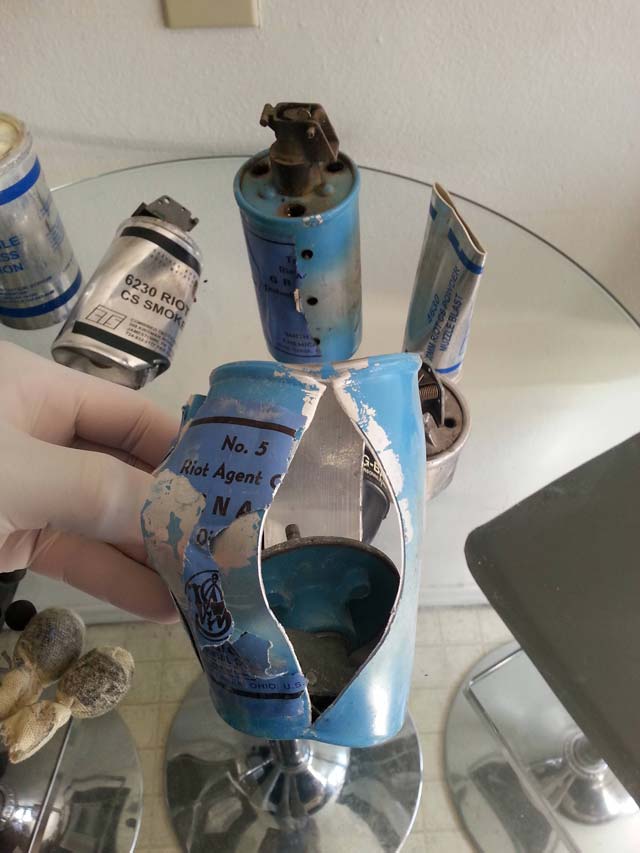 Part A, different angle. (Photo: Andrew, @bluebandit_theone on Instagram)
Part A, different angle. (Photo: Andrew, @bluebandit_theone on Instagram)
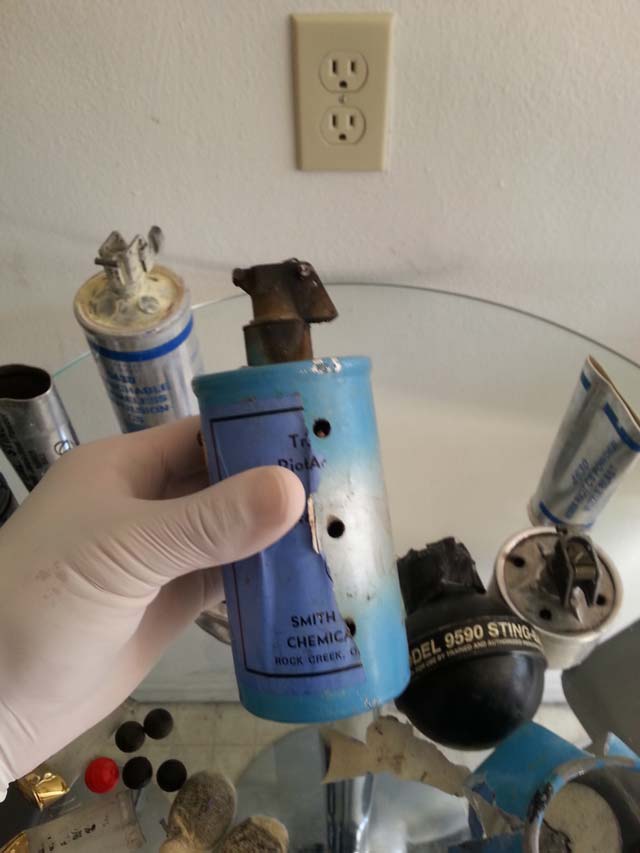 Rusted, spent Smith & Wesson tear gas container with label, hereby referred to as Part B. (Photo: Andrew, @bluebandit_theone on Instagram)
Rusted, spent Smith & Wesson tear gas container with label, hereby referred to as Part B. (Photo: Andrew, @bluebandit_theone on Instagram)
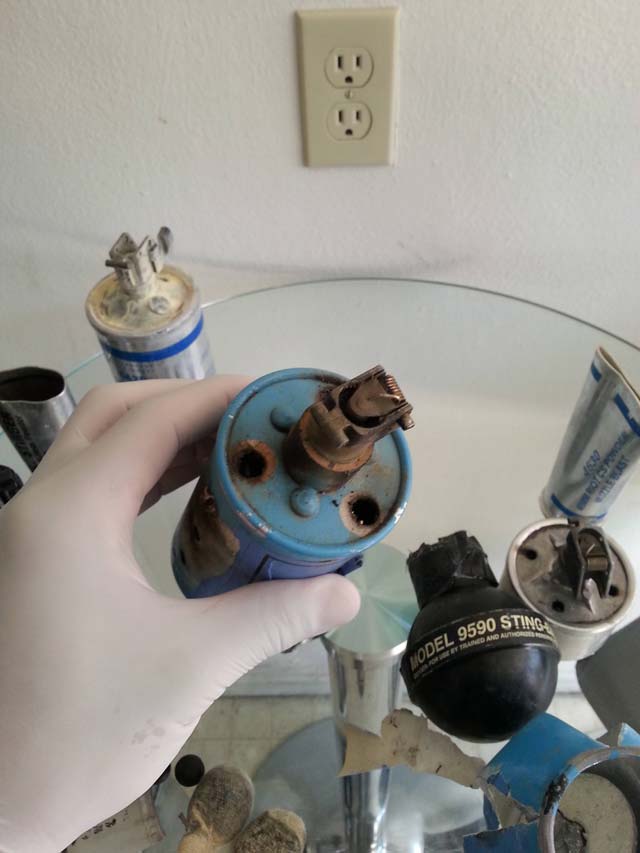 Part B, top angle. (Photo: Andrew, @bluebandit_theone on Instagram)
Part B, top angle. (Photo: Andrew, @bluebandit_theone on Instagram)
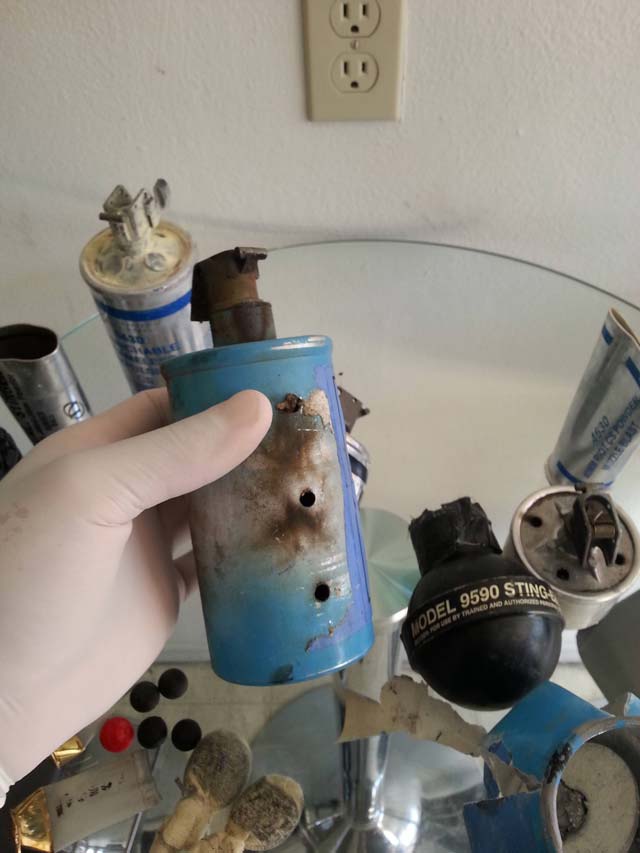 Part B, different angle. (Photo: Andrew, @bluebandit_theone on Instagram)
Part B, different angle. (Photo: Andrew, @bluebandit_theone on Instagram)
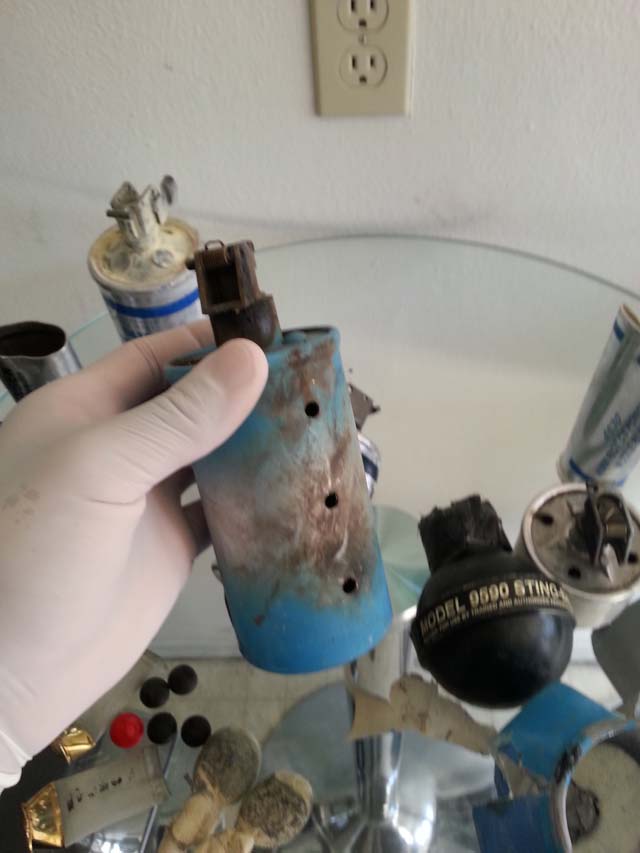 Part B, different angle. Note corrosion. (Photo: Andrew, @bluebandit_theone on Instagram)
Part B, different angle. Note corrosion. (Photo: Andrew, @bluebandit_theone on Instagram)
We’re not backing down in the face of Trump’s threats.
As Donald Trump is inaugurated a second time, independent media organizations are faced with urgent mandates: Tell the truth more loudly than ever before. Do that work even as our standard modes of distribution (such as social media platforms) are being manipulated and curtailed by forces of fascist repression and ruthless capitalism. Do that work even as journalism and journalists face targeted attacks, including from the government itself. And do that work in community, never forgetting that we’re not shouting into a faceless void – we’re reaching out to real people amid a life-threatening political climate.
Our task is formidable, and it requires us to ground ourselves in our principles, remind ourselves of our utility, dig in and commit.
As a dizzying number of corporate news organizations – either through need or greed – rush to implement new ways to further monetize their content, and others acquiesce to Trump’s wishes, now is a time for movement media-makers to double down on community-first models.
At Truthout, we are reaffirming our commitments on this front: We won’t run ads or have a paywall because we believe that everyone should have access to information, and that access should exist without barriers and free of distractions from craven corporate interests. We recognize the implications for democracy when information-seekers click a link only to find the article trapped behind a paywall or buried on a page with dozens of invasive ads. The laws of capitalism dictate an unending increase in monetization, and much of the media simply follows those laws. Truthout and many of our peers are dedicating ourselves to following other paths – a commitment which feels vital in a moment when corporations are evermore overtly embedded in government.
Over 80 percent of Truthout‘s funding comes from small individual donations from our community of readers, and the remaining 20 percent comes from a handful of social justice-oriented foundations. Over a third of our total budget is supported by recurring monthly donors, many of whom give because they want to help us keep Truthout barrier-free for everyone.
You can help by giving today. Whether you can make a small monthly donation or a larger gift, Truthout only works with your support.